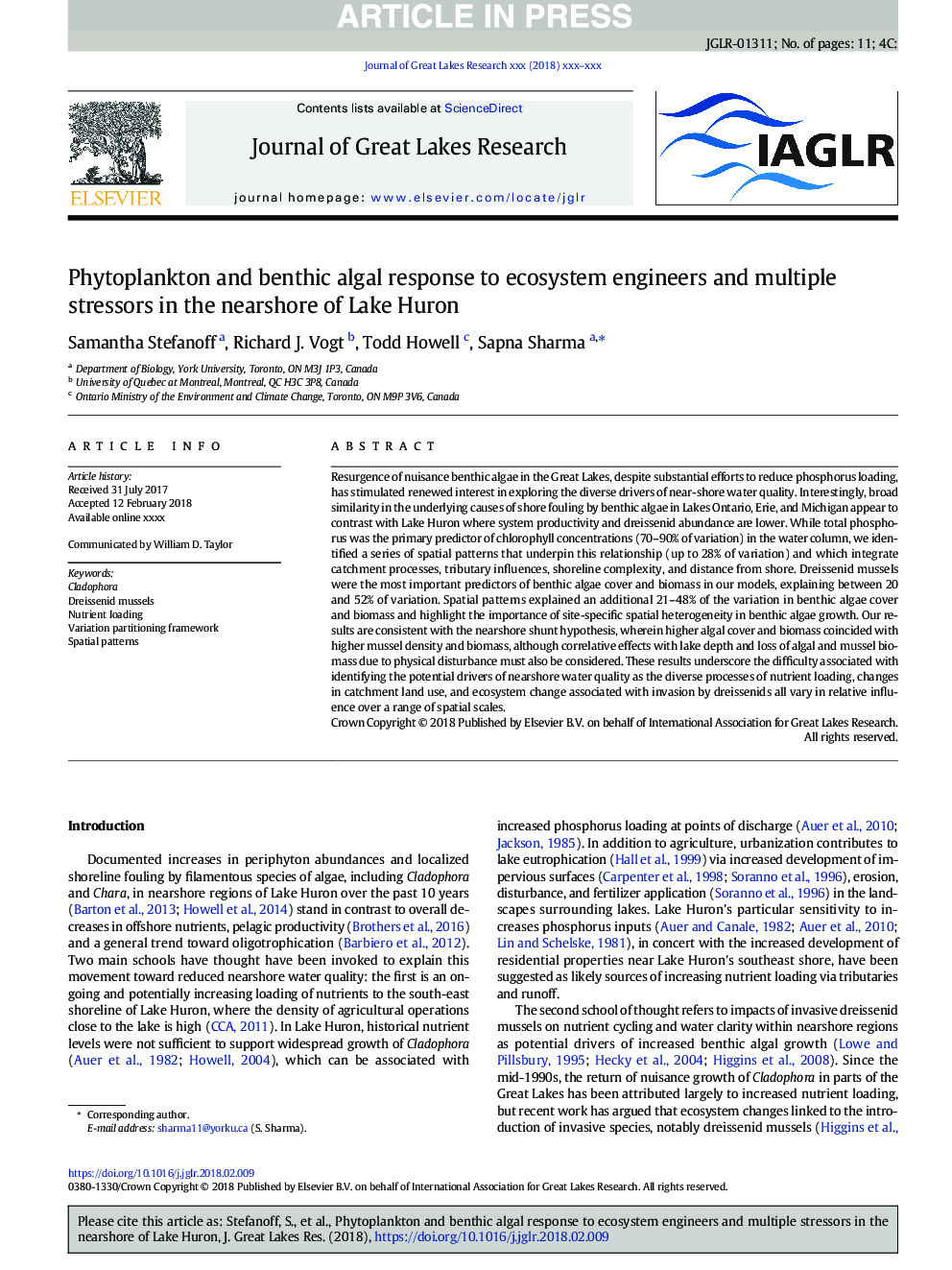| Article ID | Journal | Published Year | Pages | File Type |
|---|---|---|---|---|
| 8849109 | Journal of Great Lakes Research | 2018 | 11 Pages |
Abstract
Resurgence of nuisance benthic algae in the Great Lakes, despite substantial efforts to reduce phosphorus loading, has stimulated renewed interest in exploring the diverse drivers of near-shore water quality. Interestingly, broad similarity in the underlying causes of shore fouling by benthic algae in Lakes Ontario, Erie, and Michigan appear to contrast with Lake Huron where system productivity and dreissenid abundance are lower. While total phosphorus was the primary predictor of chlorophyll concentrations (70-90% of variation) in the water column, we identified a series of spatial patterns that underpin this relationship (up to 28% of variation) and which integrate catchment processes, tributary influences, shoreline complexity, and distance from shore. Dreissenid mussels were the most important predictors of benthic algae cover and biomass in our models, explaining between 20 and 52% of variation. Spatial patterns explained an additional 21-48% of the variation in benthic algae cover and biomass and highlight the importance of site-specific spatial heterogeneity in benthic algae growth. Our results are consistent with the nearshore shunt hypothesis, wherein higher algal cover and biomass coincided with higher mussel density and biomass, although correlative effects with lake depth and loss of algal and mussel biomass due to physical disturbance must also be considered. These results underscore the difficulty associated with identifying the potential drivers of nearshore water quality as the diverse processes of nutrient loading, changes in catchment land use, and ecosystem change associated with invasion by dreissenids all vary in relative influence over a range of spatial scales.
Related Topics
Physical Sciences and Engineering
Earth and Planetary Sciences
Earth and Planetary Sciences (General)
Authors
Samantha Stefanoff, Richard J. Vogt, Todd Howell, Sapna Sharma,
